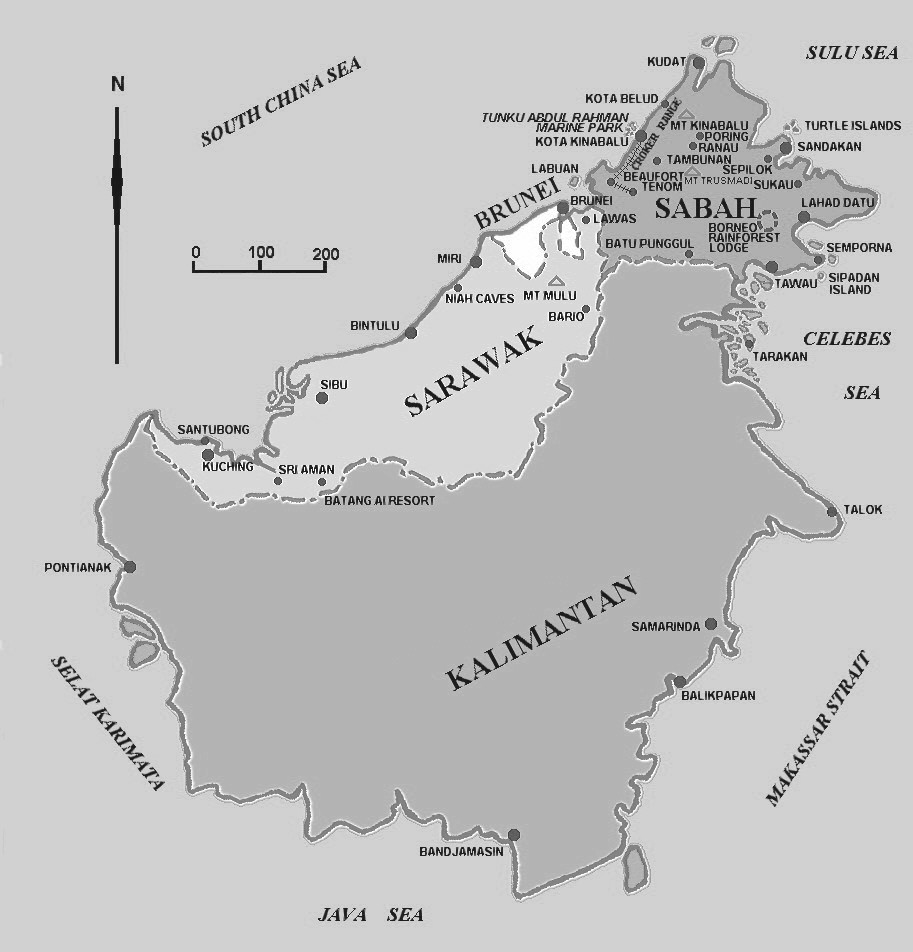A Story From Borneo.
I came across of an article from Daily Express yesterday, I wonder why Sabahan cannot write back this story with their own perspective? Do the Sabahan cannot be a good writer? The outsider use to write about Sabah, Borneo and Sarawak. Did they know that we also can write this story by our own people. Million copies of book sold outside and a lot of money pouring inside the outsider pocket. We as the new generation of Sabahan should take this opportunity to learn how to write about our own country. Try to write a simple article with your own idea and publish it through the net and see the feedback from the audience.

There are so many story about Sabah and Borneo and, was written by the Englishmen, American and Australian. The true thing is, I asking the Sabahan to develop their skill in writing so that their can express their feeling through writing. To express your feeling, we need to write, try to write simple journal first and dairy first then you came out with simple article. You can publish your article through the newspaper or create your own website. Just for reminder it can enrich your knowledge about anything you want write because before you start writing, you need to read, observe and investigation first unless you know about the story you want to write.
Never enough on Death March
Sources Daily Express, 7th April 2011
Kota Kinabalu: Several detailed books have been written on Sabah's 1945 Death March. Will another on the same subject be one too many?Paul Ham, a veteran Australian journalist and a former Sunday Times London correspondent, doesn't think so.
"History is never complete," Paul Ham argued, especially when the perspective of many local people have not been sufficiently tapped about the Japanese occupation of North Borneo and its impacts on the local community.
So he is going ahead with a new book about the Japanese occupation of North Borneo, setting the Death March in the context of the overall picture, Paul said.
"My aim is to set it in the context of the local people and the impact of the Japanese occupation on the local community," explained Paul who paid generous tributes to authors before him, citing Lynette Silver, for instance.
 |
| The Survivors, Sandakan DM |
"I greatly admire the amazing pioneering research job done by Lynette, I don't pretend to improve upon her research, but I would like to just give a slightly different perspective," added Paul who trekked tough sections of the Death March trail in March with several friends from Sydney, guided by trail blazer Tham Yau Kong and group.
He said he had spoken to a number of local people who related a very familiar story of Japanese occupying their villages, taking their food and driving them into the jungle, from where they launched hostile reprisals.
"And there are some amazing stories of courage and heroism which are independent of the Death March," Paul noted.
"It's an illuminating experience for me just talking to so many local people," he added. "I think the problem often with Anglo Saxon reading of history is they tend to be rather egocentric and we need to balance that with a local perspective.
"I am not directing that on any particular historian, just saying that we do tend to look at the past through our own prism." But he is not new to writing books, though.
He has already done three, namely, Kokoda, the first land defeat of the Japanese over the Kokoda track between July-December 1942.
"That was a story of the struggle. Again, I went to Japan to interview many Japanese veterans to get their perspective as well," Paul Ham reiterated his emphasis.
"My second book was Vietnam War and Australian involvement in our longest war - 12 years and 50,000 marines," he said.
"I spent three years working on 'The Defeat of Japan' which is coming out this year," said Paul.
After working five years full time with Sunday Times in London, Paul enrolled in the London School of Economics to study history and earned a Masters in Economic History. "No I am a full-time historian."
War is often rooted in economics, Paul says.
Japan's stated mission in its invasion of Southeast Asia was to dislodge the British Empire to liberate Asians from whites.
But liberation here, in fact, was enslavement in a way that did not occur to such an extent under British colonialism, he said.
Story Arrangement By: Harry George
Sources: Daily Express
 Chief Minister Datuk Seri Musa Aman said the fallen heroes of World War II should be remembered for their deeds. "Without their sacrifices we will not be able to have the peace and comfort that we are enjoying today," he said at the Sandakan Memorial Day 2012 here on Wednesday.
Chief Minister Datuk Seri Musa Aman said the fallen heroes of World War II should be remembered for their deeds. "Without their sacrifices we will not be able to have the peace and comfort that we are enjoying today," he said at the Sandakan Memorial Day 2012 here on Wednesday.





































